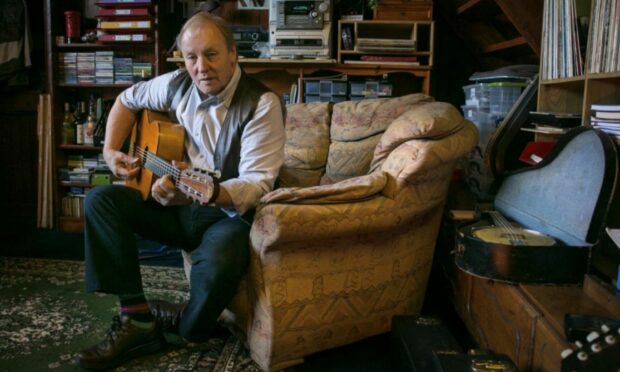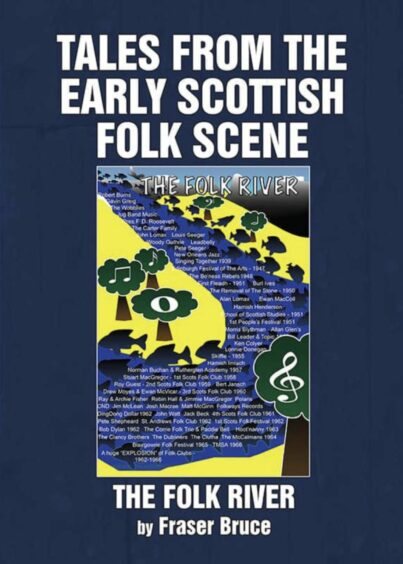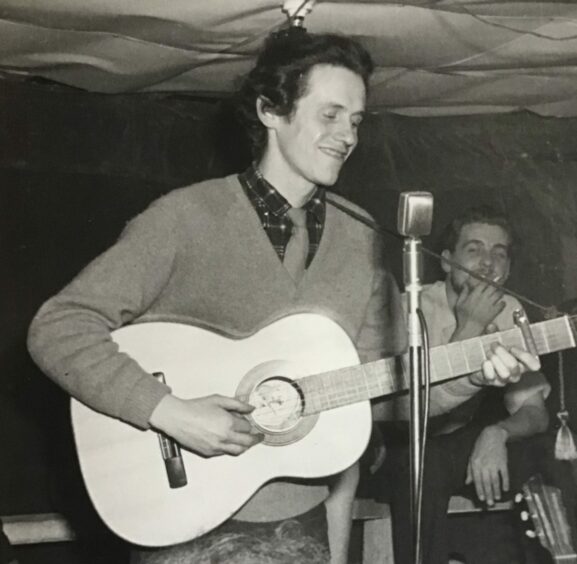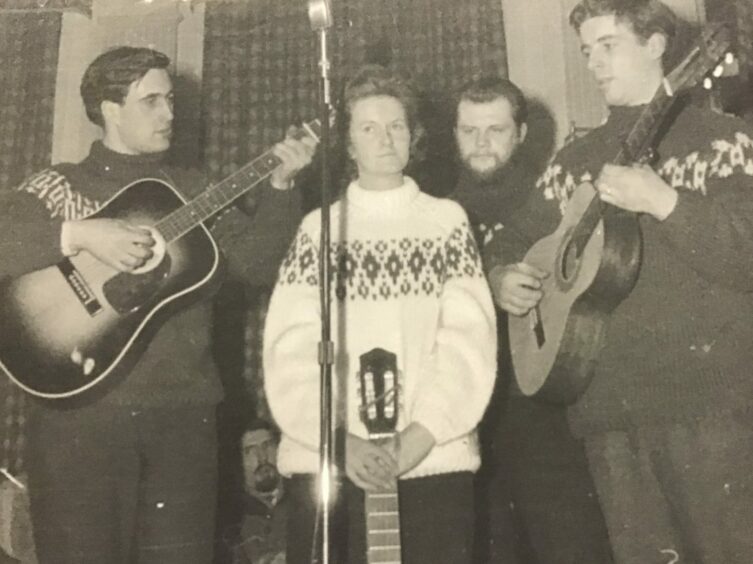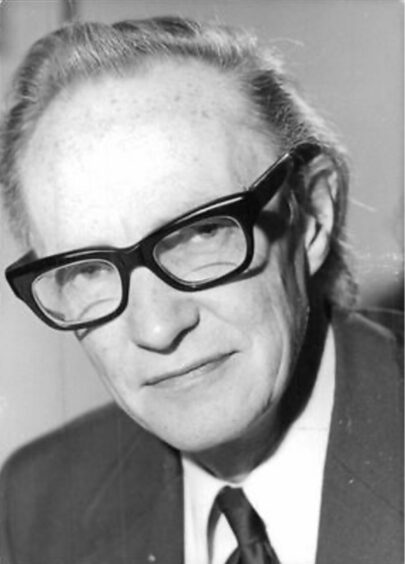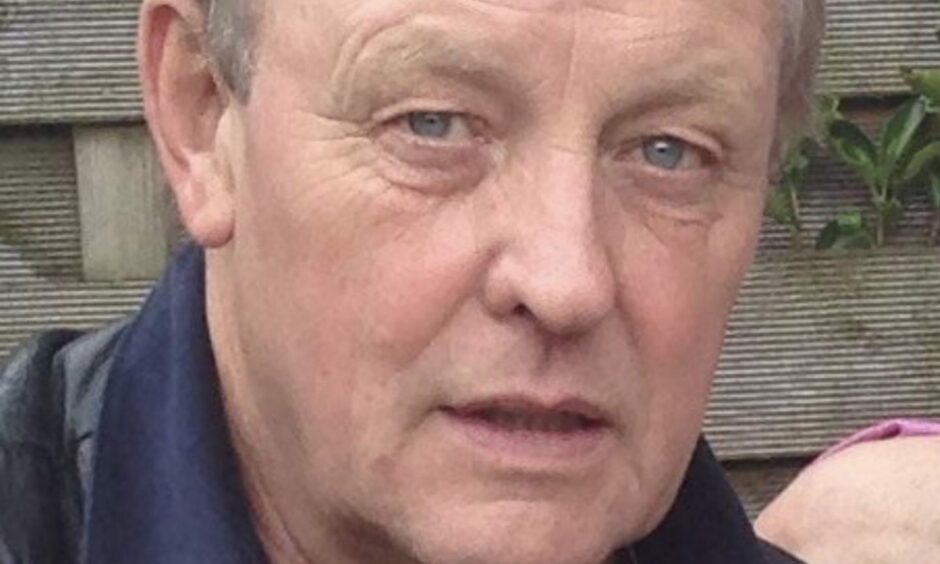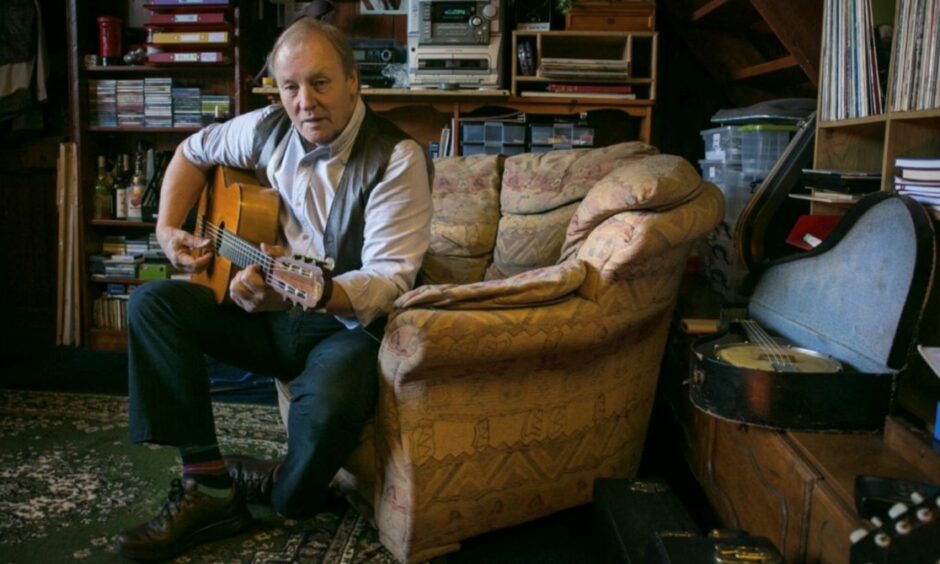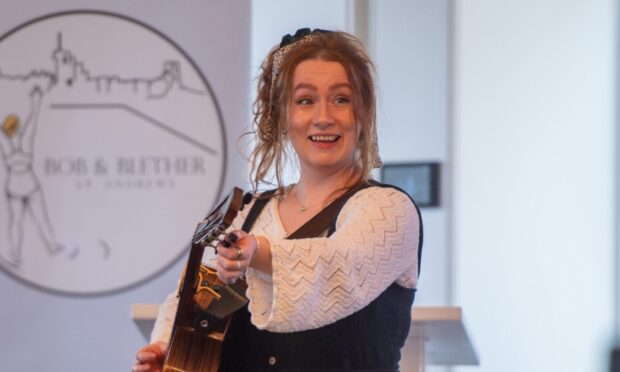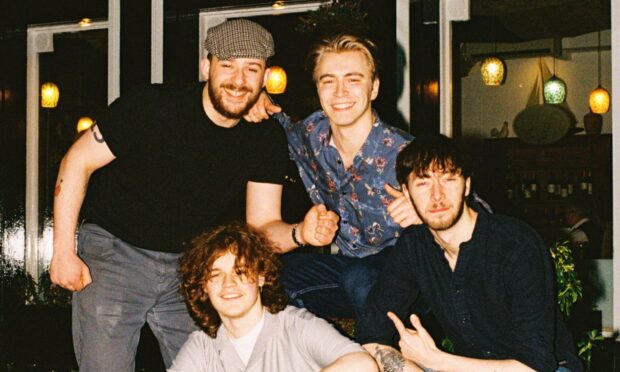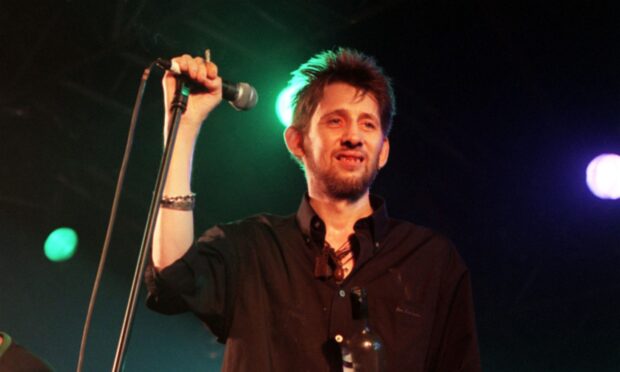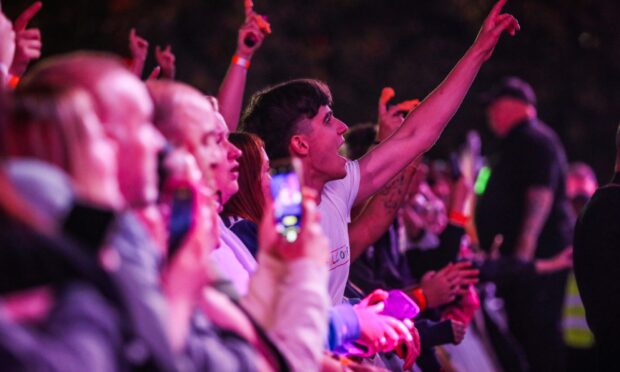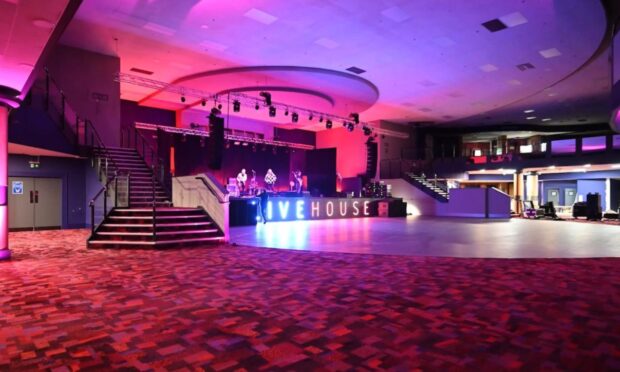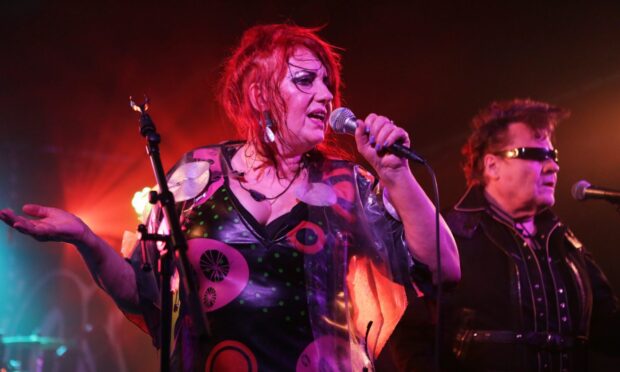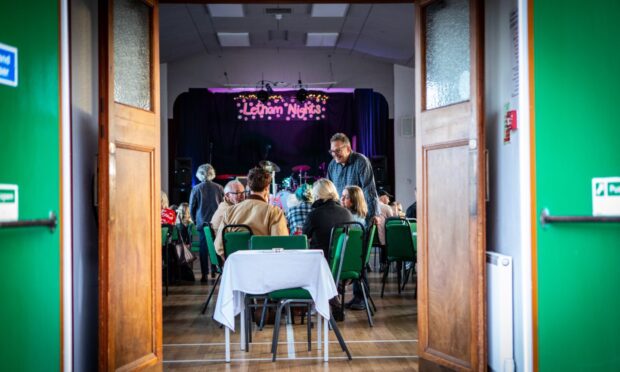If there’s one thing that frustrates Auchterarder-based folk singer Fraser Bruce, then it’s that many books written about the folk scene seem to have been written “by intellectuals for intellectuals”.
What these books don’t do, however, is reflect the “genuine folk fan”.
A lot of untrue ‘factoids’ have also built up over the years.
To remedy this, the 75-year-old has just published his own 354-page book ‘The Folk River: Tales from the Early Scottish Folk Scene’.
It collates as many stories from the past 60 years of folk music as possible, and tries to give a better understanding of how the folk club scene developed.
Now he hopes that younger people with an interest in folk music will read his book and learn the “true story” of how folk music developed in to a ‘folk club’ scene, mainly in the 1960s.
Amazing stories
“It was at the recent funeral of one of Scotland’s finest folk singers, Gordeanna McCulloch, that I commented, ‘Just think of all the amazing stories that she must have had, now we will never hear them’,” says Fraser.
“This was picked up by one of her close friends, Anne Neilson, another fine singer.
“She agreed and suggested that I should do something about it.
“We were to meet but sadly, as though to emphasise my concern, she passed away as well, only four weeks after her friend’s funeral.
“This convinced me that it was necessary to grab the true stories of those early days before all the important creators had gone.”
Fraser told The Courier how, during the next year, he travelled up and down the country meeting all these early pioneers and contributors.
Most are now in their 80s, some in their 90s but all still in fine form.
The Covid-19 lockdowns put an end to his travelling and face-to-face meetings.
However, technology allowed him to continue his chats and fact-findings.
He met, or corresponded with well over 100 people during this time.
“Many ‘writers’ can only see the 1950s with collectors such as Hamish Henderson and the singing of the Travellers,” says Fraser.
“They were important, that can’t be denied. But only to traditional songs.
“Folk songs were coming from all directions, from many tributaries and gathering in this one huge ‘Folk River’, hence the title of my book.”
American influence
Fraser explained how the Scottish folk scene was heavily influenced by American artistes.
Indeed, had it not been for the arrival of Alan Lomax in England in 1951, the folk scene may never have developed.
He had come from America to record some of the many songs from the North East of Scotland.
He took with him Hamish Henderson to assist with ‘translating’ the broad Doric and Traveller Cant.
This undoubtedly was a starter point for Traditional songs, says Fraser.
But the main influences came later with ‘The Blues’, ‘Trad Jazz’, ‘Skiffle’ and the protest marches of the early 1960s.
“Skiffle, especially, popularised the guitar and allowed average ability musicians to become part of a group and perform,” says Fraser.
“Most of the Skiffle songs were American based with Woody Guthrie songs featuring predominantly.
“Then the American submarines arrived in the Clyde.
“This led to huge protests and these protestors needed songs to sing.
“No problem for Morris Blythman, Jim McLean and a few others.
“These songs were being sung at the marches but also in the pubs and at camp sites and youth hostels all over Scotland.
“The ‘Folk Scene’ was developing. But it had nothing to do with Hamish Henderson and the Travellers.”
Scottish folk clubs
The first folk club to open in Scotland opened in 1958.
By 1960 there were only three clubs.
By 1964 it was around 20 clubs and then the ‘explosion’ happened.
By 1970 there were as many as 100 folk clubs scattered throughout Scotland from Thurso to Dumfries.
The folk ‘boom’ had arrived!
Although the Traditionalists grew in numbers, it was the commercial scene that took off.
Robin Hall and Jimmie Macgregor, The Corrie Folk Trio and Paddy Bell, The Clancy Brothers became huge.
So much so that TV was now interested and, in fairness, it was TV that made these artistes famous.
“Robin and Jimmie had a nightly song on the Tonight programme hosted by Cliff Michelmore,” recalls Fraser.
“BBC Scotland had ‘Hootenanny’ with The Corries.
“On STV there was Jigtime and The Joe Gordon Folk Four were regulars on that show.
“However, despite the stars, the folk clubs were being run by enthusiastic ‘amateurs’ who gained very little financially for running a folk club.
Indeed they were often out of pocket for all their efforts.
“They did it for the love of the music. They were the real pioneers because, without the organisers there would have been no folk clubs for the singers to play at.
“These organisers are seldom mentioned and all the credit always goes to the artistes.
“What my book does it covers all the types that were involved, all the sources of folk song, all the tributaries with the resulting ‘Folk River’.
How did Fraser get into folk music?
Fraser’s own passion for folk music developed when he was at senior secondary school in Rutherglen on the south east side of Glasgow.
At Rutherglen Academy there was a ‘ballads club’ run by a teacher called Norman Buchan, who had a huge interest in politics and left teaching to become a Labour MP.
This ballads, or folk, club produced many people who went on to have a big influence on the Scottish folk scene of the 1960s and later.
Initially Fraser’s singing was communal with groups of like-minded friends sitting in pubs and clubs singing the popular folk songs of the time.
At one such gathering, he was picked out by the man who ran two of Scotland’s largest folk clubs – one in Paisley and one in Airdrie.
He offered Fraser a solo support spot at both clubs.
This was around 1967/68, and it was the start of a semi-professional career that is still active.
Fraser admits he had no liking for school education and left voluntarily at age 15.
He tried various industries until he found one that interested him.
He joined a ‘specialist construction company’ and they took him under their wings and trained him in all levels of management skills.
From assistant manager he worked his way in to a senior post within eight years based between London and Chester and responsible for a huge project within the Nat-West Bank Tower in London.
However, all the time he was playing at folk clubs, now as main guest rather than as a support act.
Recording contract
In 1971, Fraser was playing at a folk festival in Utrecht in Holland when the managing director of Nevis Records, based in London, approached him and offered him a recording contract.
He recorded two albums with them, ‘Shamrock and Heather’ in 1971 and ‘Fareweel Tae Tarwathie’ in 1975. They were to be his only ‘solo’ albums until his recently released one ‘Every Song’s a Story’.
In a “mad moment”, he left his powerful job to ‘go on the road’ as a full time professional singer.
He’s glad he did to avoid a lifelong ‘what if’?.
Although, as it was he hated travelling round airports, trains, driving thousands of miles and often sleeping on the ‘shake-me-down’ beds of well-meaning event organisers.
In 1979 he went back to full time employment with music as a secondary interest.
He teamed up with his younger brother, Ian and they sang as ‘Mrs Bruce’s Boys’.
Within a year they were doing TV and radio work and appearing at clubs and festivals up and down the country.
They released their first album on KLUB Records, ‘Mrs Bruce’s Boys – Vol one’.
In August 1986, Fraser set up ‘The Fraser Bruce Group’ and gave up performing completely.
The company thrived and in 2014 he took a step back and handed over the management to his two oldest sons, Euan and Jamie.
Realising that the old days of packed folk clubs were gone, Fraser created a stage show called ‘Auld Hat – New Heids’ with his brother and two other musicians.
However, financially it was difficult to support and they called it a day in 2018.
He discovered he had the ability to write songs, but with nowhere to play them, contacted Greentrax Records which led to the release of a recent CD.
‘Best book of century’
Feedback so far on his book has been very positive.
Bill Smith, the man who created the Corrie Folk Trio and Paddy Bell in the early 1960s, said: “If you are at all interested in the 50s and 60s and the early days of the folk scene across Scotland then this collection of tales and stories covers a wide range of clubs and performers who were around at the time. It is an easy read and a useful reference point’.
Meanwhile, respected folk singer and ethnologist Jim McLean describes it as “the folk book of the century” and “one for the library of any serious folkie”.
Folk historian and author Ewan McVicar said: “I was expecting something pretty good, but you have surpassed my expectations and have wrought mightily!”
- The Folk River: Tales from the Early Scottish Folk Scene by Fraser Bruce is published by Traditional Arts Development. For more information go to www.fraserbruce.co.uk
